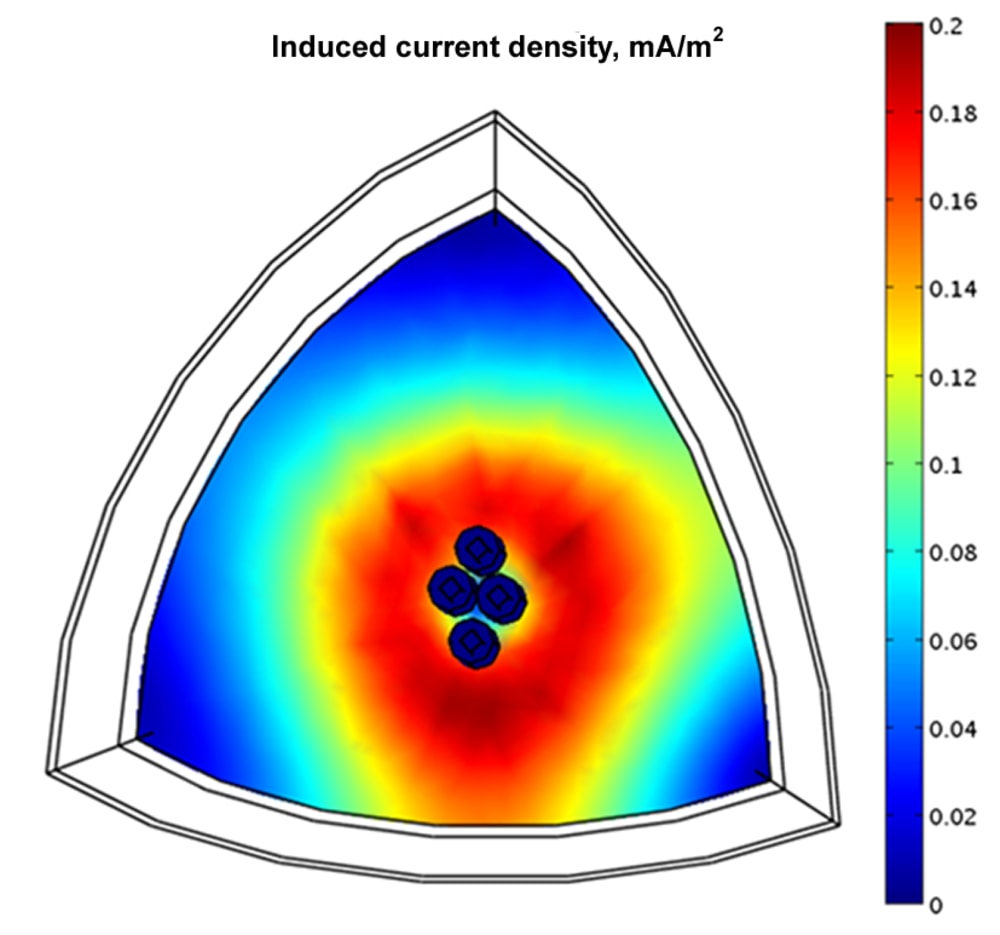PURPOSE: The World Health Organization estimates depressive disorder as a serious threat to the health of more than 120 million people worldwide, which affects all ages and both sexes [1]. It is important to notice that we are referring not only to a major neuropsychological depression classified as F32.x and F33.x in ICD-10, but often to mood disorders in general. Tens of billions of dollars are spent each year on treatment of depression and the market has substantial annual growth [2]. Among the variety of available services to defeat depression, the most popular forms of treatment nowadays are antidepressants and recently adopted non-invasive transcranial magnetic stimulation (TMS) [3]. Antidepressant medication may have adverse side effects along with the drug resistant forms of depression exist. TMS as a complex multipurpose system has such disadvantages like cost and clinical use only. To overcome this, I propose a hand-held stimulation device, which implements a novel technique of low-field magnetic stimulation (LFMS) of human brain, as an inexpensive competitor suitable for easy and safe home use.
METHODS: The work is based on the proven influence of low-intensity electromagnetic fields on biological cells. It also takes into an account disputes regarding effects of an exposure to LFMS for complex systems. Proposed LFMS differs from TMS by a thousand times weaker electric and magnetic fields, but shares the same physical background.
RESULTS: Preliminary 3D electromagnetic modeling using both layered sphere and realistic human head models (see Fig. 1 and Fig. 2) revealed the order of stimulating field suitable for operation. Current density induced in the target spot inside the human head was determined as well (see Fig. 3). That allowed me to draft a technical specification for the stimulation device.
DISCUSSION: It is required to conduct clinical trials on human volunteers aiming to verify proposed LFMS implemented in a developed stimulator. Referring to a question of reductionism, I presume that errors in modeling with a comparison to real life are going to be reveled after the validation of performed modeling against the field measurements within a human head phantom. According to principles of evidence-based medicine, originally the work is considered from the practical point of view and medical phenomena behind LFMS are going to be studied after it shows statistically significant outcome during trials.
References
[1] Sabate E. Depression in young people and the elderly. WHO. 2004.
[2] Luppa M, et al. Cost-of-illness studies of depression: a systematic review. J Affect Disord. 2007;98:29–43.
[3] Jalinous R. The guide to magnetic stimulation. Magstim. 2006.
Figures
Fig. 1 -- Surface of the realistic model of the human head.
Fig. 2 -- Mesh for the human head model.
Fig. 3 -- The genuine 3D model of low-field magnetic stimulation: distribution of current density |J| inside a 1/8-th part of the brain sphere.
Like this entry?
-
About the Entrant
- Name:Dmitry Lazutkin
- Type of entry:individual
- Hardware used for this entry:A workstation computer and the university computer clusterSoftware used for this entry:COMSOL Multiphysics and 3D Slicer
- Patent status:none








